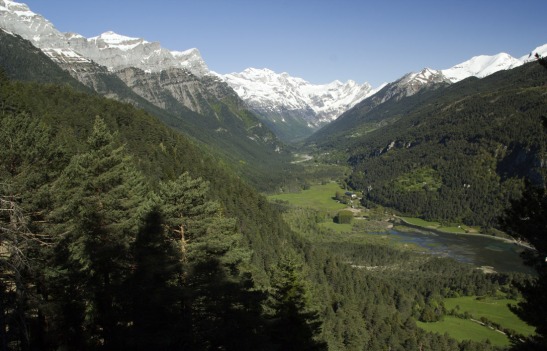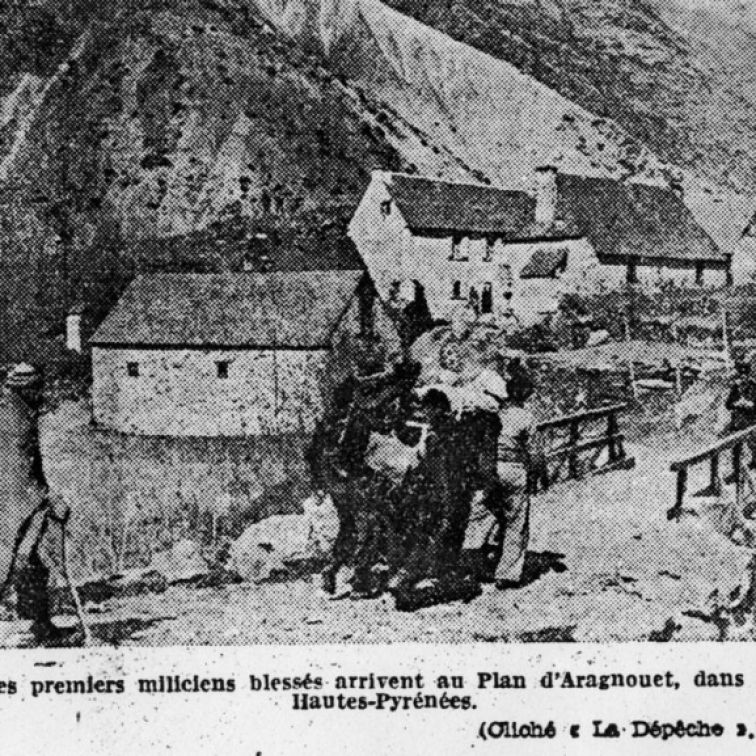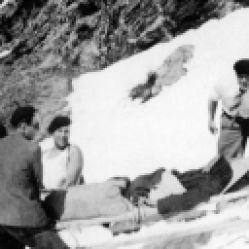May was considered a quiet month in terms of gains in the war, it was certainly not quiet. After the heavy battle of the Aragon offensive, the Levante Offensive was proving to be slow-going for troops on either side due to weather and terrain. Madrid was being bombed constantly, as those defending the city were cold and suffering from lack of food and ammunition. Franco accepted he could not just take the city, but continued to bomb slowly, restricting the Madrid defenders piece by piece. Barcelona was still reeling from bombings earlier in the year, and plagued by constant infighting between Republican factions. Northern Spain was completely dominated by the 1937 invasion by the Nationalists. Seville had been captured on day one of the war and was locked down in fascist hell, as was nearby Granada. Salamanca further north suffered a similar fate, while across in Valencia and Alicante, they were far from the frontlines but their ports were subject to attack by air. Almeria was filled with refugees from southern Spain who had nowhere to turn. People in the cities were suffering from lack of food, safe shelter and medical care, while rural homes and small villages had the additional struggles with weather, poor crops, lack of supplies and trade and constant skirmishes of fighting.
May 1 – Bielsa Pocket Offensive
By the end of April, the Nationalists had reached the Mediterranean coast, breaking through at Vinaros, the most northern town of the coastal Valencia region. The Aragon Offensive had stretched through the entire Aragon region, leaving just one pocket, the town of Bielsa, under Republican control. The tiny town on the border with France is home to around 4,000 people living in the Pineta valley by the Alto Cinca river. The 43rd division, led by Antonio “El Esquinazado (The Dodger)” Beltran, a group of 7,000 men, have only four guns and no chance of any reinforcements or air cover. Meanwhile, the Nationalists in the surrounding area have double the men, with plenty of weapons and enormous air support.
The one thing which saves the Bielsa pocket is the difficult terrain, which surrounds the valley which leads directly into the Pyrenees. The Republicans, with almost no ammunition, manage to hold off the Nationalists in outbreaks of attack, backed up by bad weather. The Bielsa pocket managed to stay unharmed through April in snow and fog, but the weather begins to clear in May, so the Republicans start evacuating the 4,000 residents of the valley over the Pyrenees and safely into France. The troops manage to hold the Nationalists back as the civilians make the trek into France, but the Republicans do not flee and continue to fight to hold the Bielsa pocket, as it represents a huge morale boost for Republicans everywhere. Despite the overwhelming odds, the Republicans would hold the Bielsa pocket well into June. Some of the soldiers and nurses choose to return to the Nationalist regions after aiding refugees, but almost 6,000 remain to fight.


May 11 – Levante Offensive
The Levante Offensive, which started on April 25, is continuing in difficult terrain. Due to the bad weather of April, all attacks were halted, giving the Republicans time to receive their new artillery, shipped over the French border courtesy of the Russians. They were fitted out with Soviet Supermosca (I-16 Type 10) fighters with four machine-guns, 40 Grumman FF fighters and anti-aircraft guns. The Nationalists wish to make it south to Castellon, some 80 kilometres south from their first break into the region.

Nationalist faction tracking south through the Levante through three different divisions
The Nationalist Galician troops start heading south along the coast, the Castile troops head east from Teruel and the Maestrazgo troops headed southeast through the mountains in the centre. The Republicans, with their new equipment, are able to slow the inevitable march of the troops south, with none of the groups reaching Castellon by the end of May. Individual skirmishes break out through the month but casualty numbers are not recorded, though it is estimated that in May, around 10,000 Nationalist men are killed, with only around 2,500 Republican casualties.
May 22 – Balaguer Offensive
The battle of Balaguer had been continuing since its first outbreak in early April. Francoist men had held the Segre river and the bridgehead into the town, when the Republicans were forced to remain in retreat on the east side of the river. On May 22, the Republicans again try to launch an offensive to take the Balaguer bridgehead, resulting in fighting going for a full seven days, but the Nationalist men are better trained, equipped and prepared.

Some of the Republican soldiers are only in their mid-teens and have received no training. By the end of the week of fighting, the Republicans have to withdraw and leave their casualties behind. Numbers of casualties during the constant outbreaks around Balaguer are not recorded, instead considered part of the overall push towards defeating Catalonia. The Republicans at Balaguer have successfully held the Nationalists as they slowly head into Catalonia, fearful of angering nearby France. The Balaguer Offensive will not end until January 1939.

May 25 – Alicante bombing
After the Aragon Offensive, Franco changes tactics to destroy the Republican maritime trade and along with it, their morale. The Italian Aviazione Legionaria and the German Condor Legion plan to undertake bombings of the remaining Republican-held cities. Valencia, Gandia, Barcelona, Murcia, Alicante, Granollers and other Spanish towns are made targets.

Nine Italian Aviazione Legionaria bombers attack Alicante. Alicante has been far safer than any other Spanish city and has no working air-raid alarm and the anti-aircraft artillery is unusable. Ninety bombs are dropped, many into the market and central city area. The deaths of civilians range between 275 and 393, some 100 of them unable to be unidentified due to damage. The Italians have no problems bombing purely civilian targets, just as the Germans have done.
Italy had already accepted to withdraw from Spain at the end of the war and to allow the Mediterranean to be safe and back to normal. But while saying this, they then sent another 3,000 men to Spain to fight and started bombing Mediterranean ports.
May 31 – Granollers bombing
Five Italian Aviazione Legionaria bombers attack Granollers. The town is only 30 kilometres north of Barcelona and has no military targets and is not a port town. One hundred kilograms of bombs, around 40 individual bombs, land in the city. As the bombing lands in the city centre, most of the dead are women and children at the market. The death toll is estimated at between 100 and 224, as not everyone missing was found after the attack.

Only now does the rest of Europe stop to pause over the bombings of civilian targets, after more than a year of specific bombings. The British government sends two officers to carry out enquiry, who report that the bombings are being planned and carried out only to install terror. The British government pairs with the Vatican, who appeal to Burgos (Franco’s Spanish capital), plus Rome and Berlin. Rome blames Burgos for ordering the attack, despite Alicante and Granollers being Italian attacks. Italy’s Foreign Affairs Minister, Mussolini’s son-in-law Gian Galeazzo Ciano promises to look into the bombings, and calls Berlin to report – “actually, we have, of course, done nothing, and have no intention of doing anything either.”

~~
This is not a detailed analysis, just a highlight (lowlight?) of the month’s events. Things get lost in translation – Feel free to suggest an addition/clarification/correction below. The more the world remembers, the better. All photos and captions are auto-linked to source for credit, and to provide further information.





